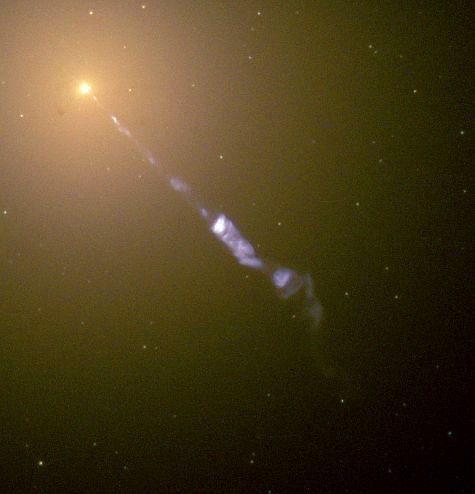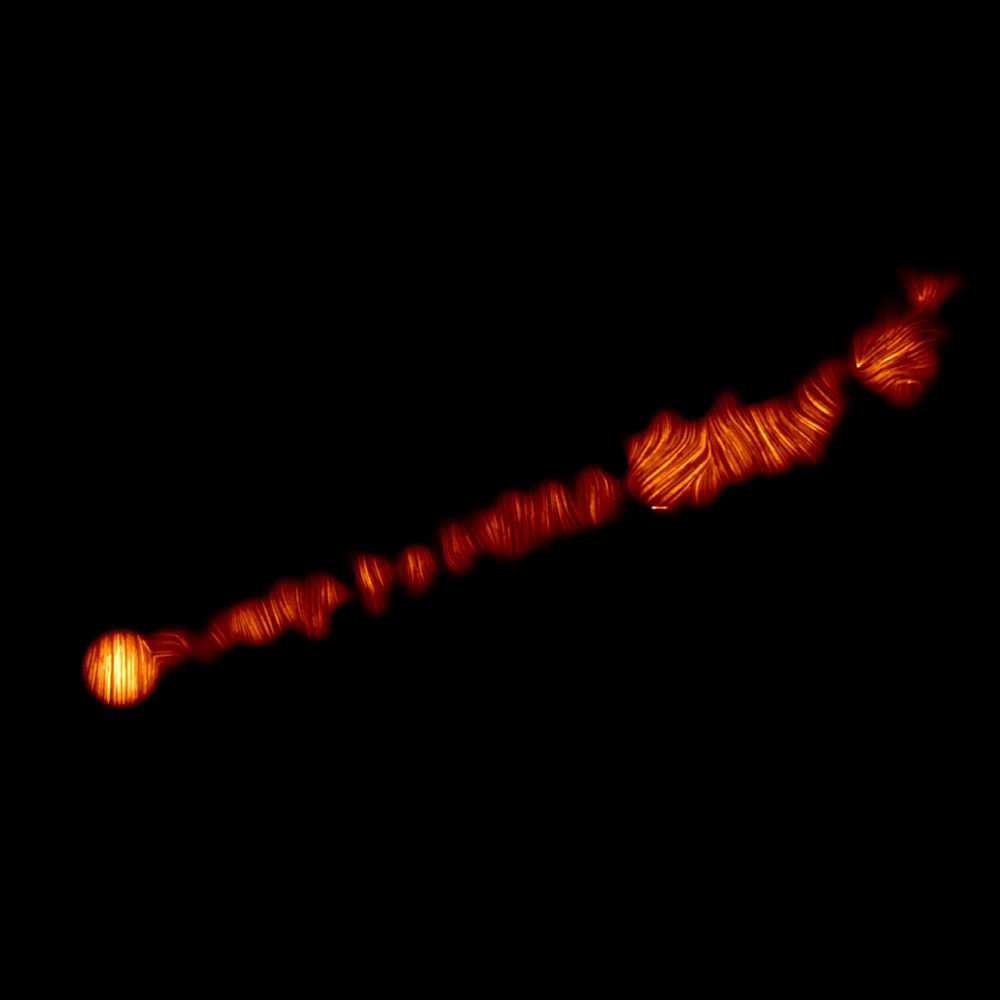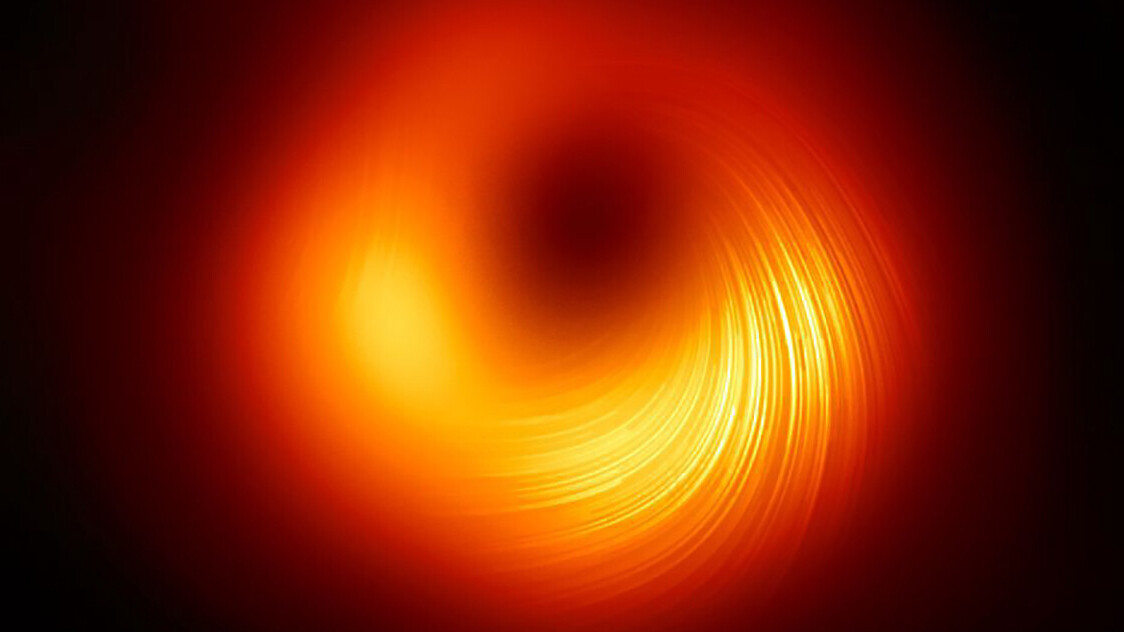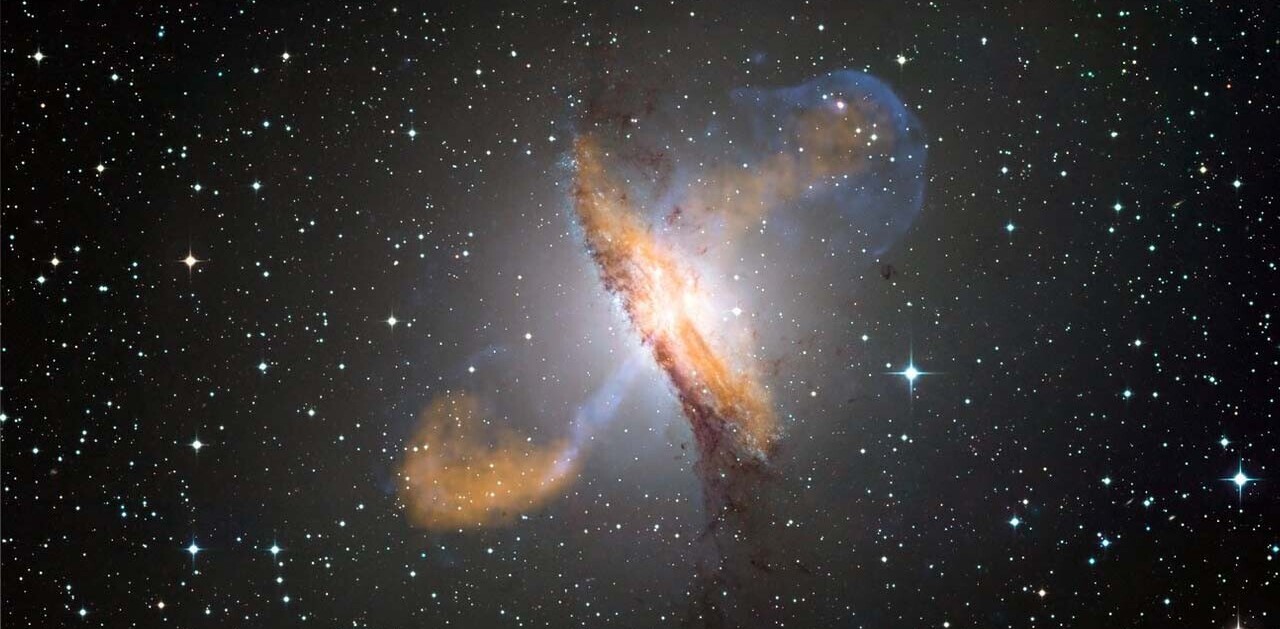In the nearly galaxy M87, more than 50 million light years from Earth, a supermassive black hole feeds on vast clouds of gas and dust. Jets, more than 5,000 light years long, erupt from this enigmatic body six billion times more massive than the Sun.
In 2019, the first detailed images ever recorded of the region around a black hole were released, showing a bright ring-like structure surrounding a dark void.
A new study of this data uncovered secrets of the magnetic fields of black holes, showing the region around the supermassive black hole in M87 in unprecedented detail.
These images, taken in radio frequencies with the Event Horizon Telescope (EHT), and the Atacama Large Millimeter/submillimeter Array (ALMA) in Chile, might also explain the mechanism driving the massive jets seen erupting from this supermassive black hole.
This may be a polarizing subject…
Supermassive black holes are found near the center of all galaxies, and the highly-energetic magnetic fields they produce can fuel massive jets, sending material racing from the galactic core. Understanding how the jets are influenced by the supermassive black holes as they form and develop remained elusive. Studying polarization of light at the edge of the black hole provided a wealth of new data to astronomers.

The EHT network of radio telescopes spread around the globe, creates a “virtual telescope” with a diameter nearly as large as Earth. The resolution of this network of telescopes is equivalent to seeing a soccer ball on the surface of the Moon.
These tools made it possible to study supermassive black holes in great detail for the first time. Astronomers quickly set their sights on one of the largest ones near us — the supermassive black hole at the center of M87.
“The elliptical galaxy M87 is the home of several trillion stars, a supermassive black hole and a family of roughly 15,000 globular star clusters. For comparison, our Milky Way galaxy contains only a few hundred billion stars and about 150 globular clusters… Discovered in 1781 by Charles Messier, this galaxy is located 54 million light-years away from Earth in the constellation Virgo,” NASA describes.
Astronomers used the EHT and ALMA to measure a single element of magnetic fields known as polarization to create these highly-detailed views. This property represents the orientation of electric fields within electromagnetic waves, including light and radio. By examining this polarization, it is possible to detect the presence and alignment of magnetic fields. This marks the first time astronomers have been able to measure polarization this close to the event horizon of a black hole — the borderline of the abyss.
“We are now seeing the next crucial piece of evidence to understand how magnetic fields behave around black holes, and how activity in this very compact region of space can drive powerful jets,” said Monika Mościbrodzka, Coordinator of the EHT Polarimetry Working Group and Assistant Professor at Radboud University in the Netherlands.
Magnetism is attractive — about half the time
Perhaps the best-known feature of black holes is the accretion disk — the flat disk formed as gas and dust falls into the abyss. Most of the material within these disks falls into the black hole, but a fraction of the particles are ejected into space at nearly the speed of light.

The new observations of the magnetic field structure just outside the black hole were compared to computer simulations of various conditions in these environments. Researchers found the only model which aligned well with observations featured strongly magnetized gas at the event horizon bordering the black hole.
“We would look up at the night sky together, and although Stephen wasn’t actually very good at detecting constellations, he would tell me about the expanding universe and the possibility of it contracting again and describe a star collapsing in on itself to form a black hole in a way that was quite easy to understand.” — Jane Hawking
By studying the shadow of the black hole and the ring of light surrounding it, researchers determined the ring is magnetized, and much of the light emanating from it is polarized, like sunlight seen through polarized sunglasses.
Powerful magnetic fields appear to push back on gas trying to fall toward the black hole. Only the gas which slips through the magnetic field can spiral in toward the gravitational abyss.
“Magnetic fields can play a very important role in how black holes ‘eat.’ If the fields are strong enough, they can prevent inflowing material from reaching the black hole. They are also important in funneling matter out into the relativistic jets that burst from the black hole region. These jets are so powerful that they influence gas dynamics amongst the entire cluster of galaxies surrounding M87,” Geoffrey C. Bower of the Academia Sinica Institute of Astronomy and Astrophysics, told ZME Science.
Analysis of the data was published in a pair of articles in Astrophysical Journal Letters, covering the magnetic field structure and polarization of light in the region surrounding this supermassive black hole. A third paper, looking at data from ALMA was also published in the same journal.
Get the TNW newsletter
Get the most important tech news in your inbox each week.





